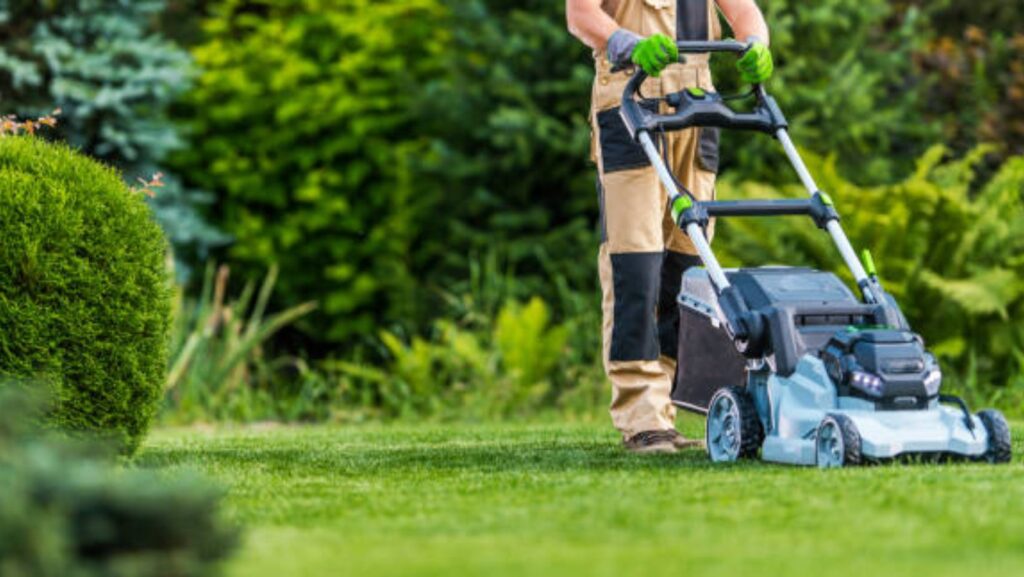
Thinking about how to store your lawn mower the right way when you’re not using it for some time?
This is a common question, especially when the mowing season is over or if there’s a gap in usage. Many people clean their lawns well, but forget about what happens to the machine once the work is done.
A little care while storing makes sure the mower stays smooth and works without problems next time.
Why Proper Storage Helps
When your lawn mower is kept properly, it avoids small issues like sticky fuel, dull blades, or battery problems. You also don’t have to spend extra time fixing things later.
Just like how we keep other tools safe, mowers also need their own simple care space. Leaving them in open spaces or uncovered areas can slowly cause damage without you even realizing it.
This is even more important for big-sized models like riding lawn mowers, where more parts and controls are involved. They work well for large lawns and comfortable mowing, so storing them properly helps maintain their ease of use.
If someone is looking at options and checking the perfect riding lawn mowers for sale, one thing they should also think about is how they plan to store them during the off-season. Taking care of storage is like taking care of your investment.
Clean Before Keeping It Away
Always give your lawn mower a nice clean-up after the last use before storage. Wipe off grass pieces, mud, and any bits stuck around the wheels or blades. Use a brush or even a cloth.
If there’s too much dirt, you can use a little water, but dry it well afterward. If dirt stays on it, it can lead to marks or rough spots later. Cleaning takes only a short time, but it helps your mower stay fresh and safe for longer use.
Choose a Covered and Dry Spot
A dry and covered place is always better than leaving it out in the open. A shed, garage, or storage room is perfect. If those are not available, you can make a simple corner under shade and use a good cover on top.
Avoid places where water drips or the ground is always wet. Moisture slowly damages the parts, especially when the mower is kept idle.
Keep the Fuel in Mind
If the mower will rest for many weeks or months, it’s better to empty the fuel tank or run it until the fuel finishes. Keeping fuel inside for too long can make it stale and sticky.
When you start the mower later, this old fuel can affect the engine or smell bad. For short breaks of a week or two, it’s fine to leave it as it is. But for longer gaps, finishing or draining the fuel is safer.
Check the Oil and Air Filter
Before storage, take a look at the engine oil. If it looks too dark or thick, change it. Clean oil keeps the engine safe even when it’s not running for a while.
Also, check the air filter. If it’s dusty, gently clean it or replace it if needed. These two steps make sure the mower stays healthy from the inside, too.
Remove the Battery (If It Has One)
Some mowers come with batteries, especially riding types. If yours has one, take the battery out and keep it in a dry and safe place. Batteries lose power slowly even when not in use, so it’s better to store them separately.
This helps avoid low charge or rust on the battery ends. When you’re ready to mow again, just place it back and you’re good to go.
Cover It Well
A cover is simple but very useful. It protects the mower from dust, bugs, and sudden changes in the air. Don’t use plastic sheets because they trap moisture.
Try using a cloth cover or a soft, waterproof material that still lets air move around. Make sure the cover fits properly so no part is left open.
Don’t Forget the Blades
Clean the blades properly before storage. If you leave grass or dirt stuck to them, it can make them dull. Wipe the blades gently and make sure they are dry.
If the blades feel loose or slightly worn out, fix them before keeping the mower aside. That way, next time you take it out, you won’t need to worry about sharpening or tightening anything.
Keep It Off the Wet Floor
If the floor is always a little damp, use wooden planks or bricks under the mower wheels. This stops direct contact with wet ground and helps avoid rust or soft tire issues.
This is especially helpful for people who store the mower in a side room or balcony where the floor may not stay fully dry.
Group All Accessories Together
Keep everything related to your mower in one place. Small tools, extra belts, or the instruction manual, just place them in a box or basket next to the mower.
This makes it easy to find everything later. You won’t be running around looking for one screw or a missing key.
Start It Once in a While
Even if the mower is resting for a long time, start it once every few weeks just for a minute.
This keeps the parts moving and helps the battery stay active. It also helps spot any issue before it grows bigger.
Make Storage a Habit, Not a Task
Once you make these steps part of your habit, storage doesn’t feel like extra work. Your mower will last longer, start quicker, and perform just like the first time. You’ll save time, avoid repairs, and feel relaxed every time mowing season comes around again.













